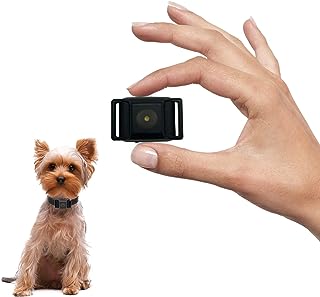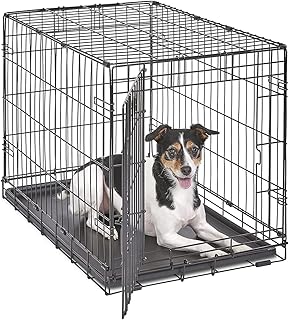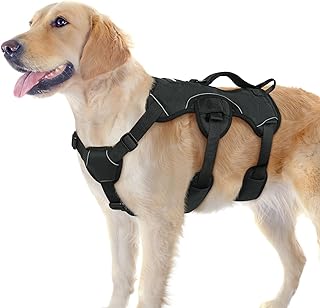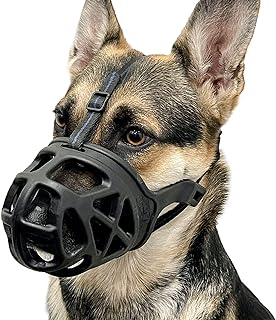5 important factors worth considering when looking for the best dog collar zapper
When buying a dog collar zapper, it’s important to consider a few things to make sure it’s safe and effective for your pet. You should think about the size, how durable it is, how well it works, and if it’s humane. This decision is more than just buying something – it’s about being a good pet owner. Knowing these factors is crucial to choosing the right collar that matches your values, training needs, and most importantly, keeps your furry friend safe and comfortable.
See our guide to the best dog collar zapper.
Size and weight of the collar
When buying a dog collar zapper, it’s important to think about the size and weight. The collar should be strong but not too heavy so your dog can wear it comfortably. A bulky or heavy collar may bother your dog and make them not want to wear it. A lightweight and durable collar allows your dog to move easily and keeps everyone happy.
The size of the collar is also crucial for a good fit. A loose collar might fall off or get stuck, while a tight collar can hurt your dog’s neck. Measure your dog’s neck accurately and choose a collar with adjustable options for the best fit. A collar that fits well and is light will keep your dog comfortable, safe, and happy. Small details like the size and weight of the collar can make a big difference in your dog’s daily life.
Range of shock intensity levels
When looking to buy a dog collar zapper, the different shock levels can be a hot topic for pet owners. Some people think higher shocks are needed for stubborn or aggressive dogs, while others worry it could hurt their pets. I believe finding the right balance is key. You should think about your dog’s temperament, size, and behavior before picking a shock level. Every dog is different, so it’s important to customize to keep your pet safe.
I also think positive reinforcement is the most important when training your dog. While a dog collar zapper can be helpful, relying too much on shocks can harm your bond with your pet. By mixing in rewards, praise, and being consistent, you can create a positive learning atmosphere for your dog without using too many shocks. By understanding your dog’s needs and using a balanced approach, you can have better and longer-lasting results in the end.
Durability and water resistance
When choosing a dog collar zapper, it’s important to consider how durable and water-resistant it is. A strong build ensures that the device can handle daily wear and tear, including rough play and outdoor activities with your pet. Water resistance is also key for those unexpected moments when your dog gets wet. Opting for a collar zapper that is both durable and water-resistant ensures it will last a long time and work reliably in various situations.
Considering durability and water resistance in a dog collar zapper is crucial for effective training. A sturdy, water-resistant device ensures clear communication and reinforcement during training sessions, even in challenging conditions. By prioritizing these features, you are not only protecting your investment but also setting the stage for successful training sessions that strengthen the bond between you and your dog.
Battery life and charging method
When looking at dog collar zappers, it’s important to focus on battery life and charging to make sure it works well and is easy to use. A strong battery is key for a good training collar, allowing you to use it regularly without constantly recharging. Choosing a zapper with a lasting battery means you can have longer training sessions without worrying about the power running out. Additionally, picking a collar with a fast and effective way to charge it can greatly improve your experience. Quick charging means less time waiting between sessions, making it easier to fit training into your daily routine. Prioritizing battery life and charging efficiency can help you make the most of your training while avoiding unnecessary disruptions.
In dog training, not considering battery life and charging can lead to frustrations and setbacks. A reliable battery and easy charging system are crucial for the effectiveness and convenience of a zapper. Ignoring these factors could result in sudden power loss during important training moments or long charging times that disrupt your schedule. Choosing a collar with a strong battery and quick charging isn’t just about convenience, but a smart way to get the best results from your training. By carefully looking at battery life and charging when choosing a collar, you can ensure successful training sessions that are consistent, effective, and free from interruptions.
Compatibility with size and breed of dog
Choosing the right dog collar zapper is important when training your furry friend. It’s vital to consider your dog’s size and breed to find the best collar for them. Different breeds have different personalities and characteristics, so it’s important to choose a collar that suits your dog’s needs.
For larger breeds with strong personalities, a collar with adjustable intensity levels and a wide range can be effective without being harmful. Smaller breeds, on the other hand, may need a gentler approach with a smaller collar that offers light correction. Understanding your dog’s size and breed will help you choose a collar that is both effective and safe for your pet.
It’s crucial to match the collar zapper to your dog’s size and breed. Look for a durable collar for larger, more active breeds, and a lightweight, ergonomic collar for smaller, more sensitive breeds. Consider your dog’s temperament and behavior when choosing a collar, as different breeds may respond better to different types of stimulation.
By taking the time to assess your dog’s needs and characteristics, you can choose a collar that will help with training and strengthen your bond with your pet.
Conclusion
In the end, using dog collar zappers for training may seem like a fast fix for dog behavior problems, but we should think about the harm they can do. Shock collars raise ethical concerns because they go against positive training methods that focus on trust and building a strong bond between dogs and their owners. It’s important to look for other ways to train dogs that prioritize their well-being and safety. We should focus on building a relationship with our dogs based on understanding and compassion, not fear and pain.



